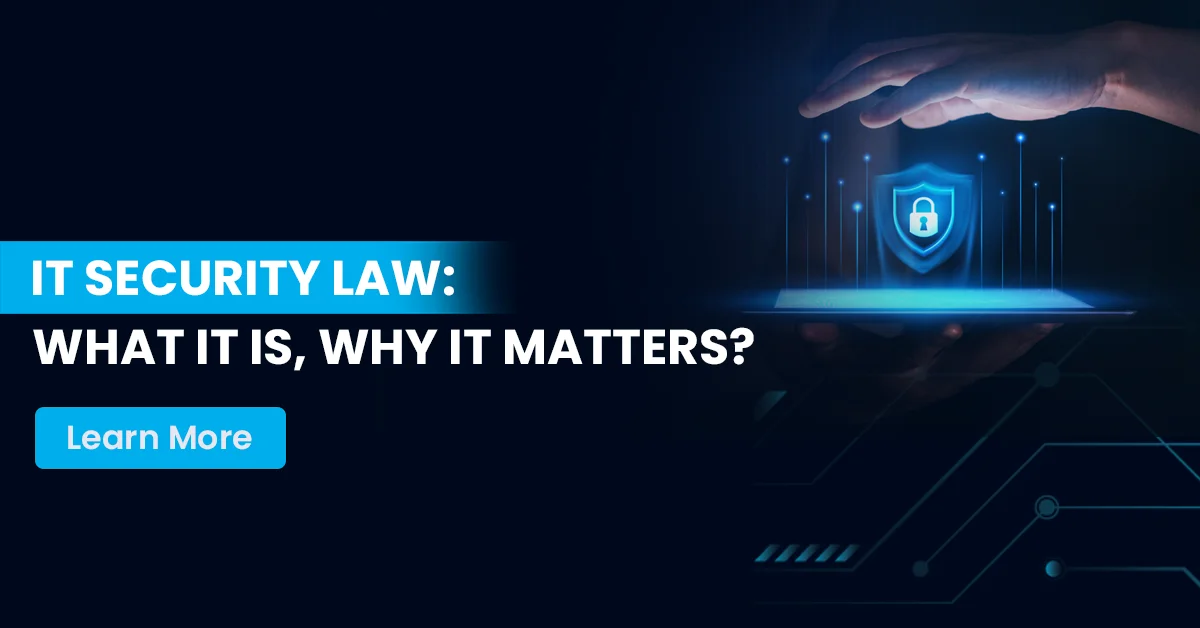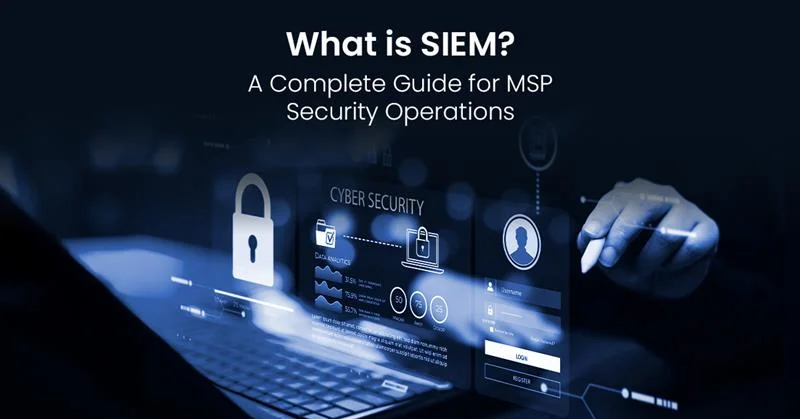The numbers are staggering. According to IBM’s Cost of a Data Breach Report 2024, the average cost of a data breach reached $4.88 million that year, with businesses facing not only financial devastation but also legal penalties that can destroy their reputation overnight. Yet despite these alarming statistics, many organizations remain dangerously unaware of IT security law requirements.
IT security law isn’t just another compliance checkbox,; it’s your legal lifeline in an increasingly hostile digital landscape. This guide breaks down everything you need to know about cybersecurity law, security regulations, and the legal framework that protects businesses from both cyber threats and regulatory penalties.
What is IT security law and why does it matter?
IT security law represents the comprehensive legal framework governing how organizations must protect digital assets, sensitive data, and information systems. These cybersecurity laws establish mandatory standards for data protection, incident response, and cyber threat prevention across all industries.
The reality check: 88 percent of cybersecurity breaches are caused by human error, yet legal responsibility falls squarely on the organization’s shoulders. Understanding IT security law isn’t optional, it’s essential for survival in today’s digital economy.
How cybersecurity law protects your business
Cybersecurity law creates a structured defense system that establishes clear legal frameworks for data protection standards, penalty structures for non-compliance with IT security law requirements, and business liability standards when cyber incidents occur.
The legal protection extends beyond simple compliance. Organizations that demonstrate adherence to cybersecurity law often receive reduced penalties during investigations and better insurance coverage rates.
What makes information security laws essential
Information security laws have evolved dramatically from traditional privacy statutes. Modern IT security law addresses sophisticated cyber threats through security regulations that integrate with business operations, requiring organizations to embed cyber security compliance into their core processes.
Companies that implement robust IT security law compliance programs typically experience fewer security incidents than their non-compliant counterparts.
Key components of IT security law framework
The modern IT security law landscape operates on multiple interconnected levels, creating a comprehensive shield against cyber crimes and data breaches.
Understanding security regulations at federal level
Federal cybersecurity law provides the foundation for nationwide IT security standards. The cyber security act establishes minimum requirements that apply across all industries, while specialized security regulations target specific sectors with heightened risk profiles.
Key federal IT security law components include mandatory breach notification requirements, data encryption standards, and incident reporting protocols. The federal cyber security act also establishes coordination between government agencies and private sector organizations.
How state cybersecurity law differs
State-level IT security law often exceeds federal requirements. California’s Consumer Privacy Act (CCPA) exemplifies how state cybersecurity law can impose stricter standards than federal regulations.
Different states maintain varying approaches to information security laws, creating complex compliance challenges for multi-state organizations that must navigate different IT security law requirements across jurisdictions.
What the international cyber security act covers
Global IT security law compliance has become unavoidable for most businesses. The European union’s GDPR affects any U.S. business that processes EU citizen data, regardless of company location.
International cyber theft laws create extraterritorial enforcement mechanisms, meaning violations abroad can result in penalties in multiple jurisdictions.
Major IT regulations and compliance requirements
Navigating IT regulations and compliance requires understanding how different frameworks apply to your business. Each regulation brings specific cybersecurity law requirements that organizations must integrate into their overall security strategy.
How HIPAA shapes information security laws
HIPAA represents one of the most comprehensive examples of sector-specific IT security law. Healthcare organizations face stringent cybersecurity law requirements that include mandatory access controls, audit logging, and encryption requirements for protected health information.
Healthcare data breach costs have increased 53.3 percent since 2020, making HIPAA compliance not just a legal requirement but a financial necessity.
What SOX means for cyber security compliance
The Sarbanes-Oxley Act (SOX) imposes IT security law requirements on publicly traded companies. Financial data protection mandates under SOX require robust cybersecurity controls over financial reporting systems, including change management controls, access restrictions, and comprehensive audit trails.
Why PCI DSS affects your IT security law strategy
Payment card industry data security standard (PCI DSS) compliance affects any organization that processes credit card transactions. These security regulations create specific IT security law obligations for merchants through network segmentation, encryption standards, and vulnerability management programs.
Cyber theft laws and legal consequences
Understanding cyber theft laws helps organizations prepare for potential legal challenges while implementing appropriate security measures.
How cyber theft laws define criminal activity
Cyber theft laws establish clear definitions of criminal activity in cyberspace, from unauthorized access to complex ransomware operations. The likelihood that a cybercrime entity is detected and prosecuted in the U.S. Is estimated at around 0.05 percent, highlighting the importance of prevention over prosecution.
What penalties apply under security regulations
Financial penalties for non-compliance with IT security law vary dramatically based on violation severity. GDPR fines totalled 2.1 billion euros in 2023, demonstrating serious financial consequences of cybersecurity law violations.
Criminal charges under cybersecurity law can result in individual liability for executives and IT professionals who knowingly violate security regulations.
Building effective IT regulations and compliance programs
Creating a comprehensive approach to IT regulations and compliance requires strategic planning that integrates legal requirements with operational capabilities.
How to assess your current cyber security compliance
Gap analysis for security regulations begins with understanding which IT security law requirements apply to your organization. Risk assessment under IT security law requires evaluating both technical vulnerabilities and compliance gaps.
Compliance audit procedures should occur quarterly for high-risk areas and annually for comprehensive IT security law review.
What Steps Ensure Information Security Laws Compliance
Policy development for cybersecurity law adherence requires translating legal requirements into actionable organizational procedures. Employee training on cyber theft laws creates human firewall protection, as 68 percent of breaches involved a human element in 2024.
Incident response under IT security law requirements demands pre-planned procedures that address legal notification requirements and regulatory reporting obligations.
Conclusion: Don’t Let IT Security Law Violations Destroy Your Business
The stakes are crystal clear: violate IT security law, face devastating consequences. With most organizations facing ransomware attacks and massive breach costs, reactive compliance isn’t an option—it’s business suicide.
The smart money invests in protection
Organizations using advanced security tools dramatically reduce breach costs. The math is simple: compliance costs less than catastrophe.
What professional IT security law support delivers:
- Around-the-clock monitoring across all cybersecurity law frameworks
- Expert guidance on complex IT regulations and compliance requirements
- Incident response meeting cyber theft laws standards
- Audit-ready documentation for information security laws
- Proactive threat detection preventing legal violations
IT By Design’s SOC Service provides exactly this level of comprehensive IT security law protection. Their security operations center monitors threats 24/7 while ensuring your organization meets all cybersecurity law requirements across industries and jurisdictions.
Stop playing compliance roulette!
Your reputation, finances, and legal standing hang in the balance. Every day without proper IT security law compliance is another roll of the dice with your business future.
Ready to bulletproof your compliance?
The cost of getting it wrong far exceeds getting it right. Schedule a call with us today to get professional guidance that transforms overwhelming IT security law requirements into manageable, profitable protection.
FAQs (frequently asked questions)
Q1: What are the main penalties for violating IT security law?
A: Financial fines ranging from thousands to millions of dollars, plus potential criminal charges for executives.
Q2: How often should businesses review their cyber security compliance?
A: Quarterly reviews for critical areas, comprehensive annual audits for all IT security law requirements.
Q3: Do small businesses need to comply with information security laws?
A: Yes, size doesn’t exempt compliance—most IT security law applies to all businesses regardless of employee count.
Q4: What’s the difference between cybersecurity law and privacy law?
A: Cybersecurity law protects against threats; privacy law controls how personal data is collected and used.
Q5: How do cyber theft laws apply to remote workers?
A: IT security law extends to home offices and personal devices used for business—no location exemptions.








